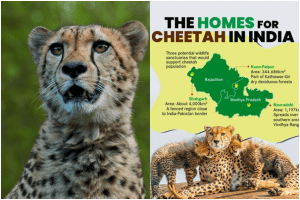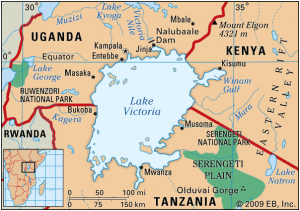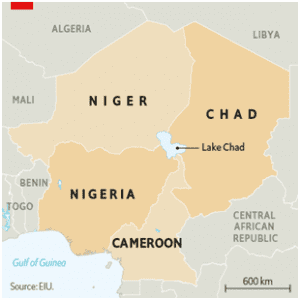ECONOMIC DEVELOPMENTS
1. WHAT IS T+1 SETTLEMENT?
TAGS: PRELIMS PERSPECTIVE- GS-III- ECONOMY
THE CONTEXT:After China, India will become the second country in the world to start the ‘trade-plus-one’ (T+1) settlement cycle in top listed securities bringing operational efficiency, faster fund remittances, share delivery, and ease for stock market participants.
THE EXPLANATION:
What’s the T+1 settlement plan?
- The T+1 settlement cycle means that trade-related settlements must be done within a day, or 24 hours, of the completion of a transaction. For example, under T+1, if a customer bought shares on Wednesday, they would be credited to the customer’s demat account on Thursday. This is different from T+2, where they will be settled on Friday. As many as 256 large-cap and top mid-cap stocks, including Nifty and Sensex stocks, will come under the T+1 settlement from Friday.
- Until 2001, stock markets had a weekly settlement system. The markets then moved to a rolling settlement system of T+3, and then to T+2 in 2003. T+1 is being implemented despite opposition from foreign investors. The United States, United Kingdom and Eurozone markets are yet to move to the T+1 system.
And what are the benefits of T+1?
- In the T+1 format, if an investor sells a share, she will get the money within a day, and the buyer will get the shares in her demat account also within a day.
Could it also make markets safer?
- According to a paper published by the Securities and Exchange Board of India (SEBI), a T+1 settlement cycle not only reduces the timeframe but also reduces and frees up capital required to collateralise that risk.
- A shortened settlement cycle also reduces the number of outstanding unsettled trades at any point of time, and thus decreases the unsettled exposure to Clearing Corporation by 50 per cent. The narrower the settlement cycle, the narrower the time window for a counterparty insolvency/ bankruptcy to impact the settlement of a trade.
SCIENCE AND TECHNOLOGY
2. INDIA’S FIRST MISSION TO STUDY THE SUN
TAGS: PRELIMS PERSPECTIVE- GS-III- SCIENCE AND TECHNOLOGY
THE CONTEXT:According to sources, Indian Space Research Organisation (ISRO) is planning to launch the Aditya-L1 mission by June or July this year (2023). Aditya-L1 is the first Indian space mission to observe the Sun and the solar corona.
THE EXPLANATION:
About Aditya-L1 mission:
- The Aditya-L1 mission will be launched by ISRO to the L1 orbit (which is the first Lagrangian point of the Sun-Earth system). L1 orbit allows Aditya-L1 to look at the Sun continuously.
- Aditya-L1 has seven payloads in total, of which the primary payload is the Visible Emission Line Coronagraph (VELC), designed and fabricated by the Indian Institute of Astrophysics, Bengaluru.
- The other six payloads are being developed by the ISRO and other scientific institutions.
- It is a joint venture between ISRO and physicists from other institutes of India.
- Aditya- L1 satellite will be placed in the halo orbit around the Lagrangian point 1 (L1) of the sun-earth system
- Utility: The data from Aditya mission will be immensely helpful in discriminating between different models for the origin of solar storms and also for constraining how the storms evolve and what path they take through the interplanetary space from the Sun to the Earth
Objectives of mission
- Study dynamic nature of sun’s outer most layers, the corona and the chromosphere, and collect data about Coronal Mass Ejections (CME).
- Study on origin of solar storms and their path through the interplanetary space from the Sun to the Earth.
- The studies will also focus on collection of information for space weather prediction.
VALUE ADDITION:
What is Lagrange Point?
- The L1 point is about 1.5 million km from Earth or about 1/100th of the way to the Sun.
- L1 refers to Lagrangian/Lagrange Point 1, one of 5 points in the orbital plane of the Earth-Sun system.
- These can be used by spacecraft to reduce the fuel consumption needed to remain in position.
- A Satellite placed in the halo orbit around the Lagrangian point 1 (L1) has the major advantage of continuously viewing the Sun without any occultation/ eclipses.
- The L1 point is home to the Solar and Heliospheric Observatory Satellite (SOHO), an international collaboration project of the National Aeronautics and Space Administration (NASA) and the European Space Agency (ESA).
ENVIRONMENT, ECOLOGY AND CLIMATE CHANGE
3. INDIA INKS PACT TO INTRODUCE DOZENS OF CHEETAHS FROM SOUTH AFRICA
TAGS: PRELIMS PERSPECTIVE- GS-III- ENVIRONMENT AND ECOLOGY
THE CONTEXT: According to sources, the Memorandum of Understanding between New Delhi and Pretoria to bring 12 cheetahs to India from South Africa was finally signed after a long delay.
THE EXPLANATION:
- These cheetahs will join the eight big cats from Namibia that arrived at the Kuno National Park in Madhya Pradesh’s Sheopur district on September 17, 2022.
- The dates of their arrival are still uncertain. The Madhya Pradesh Forest department had hoped the cheetahs would arrive by February, but the latest speculations suggest it will take at least until the first week of March 2023.
- Also, as per the sources Indian delegation will leave for South Africa sometime in the second week of February to bring the 12 big cats.
India’s effort related to the relocation of Cheetahs
- This isn’t the first time India has attempted the relocation of the Cheetah.
- In the early 1970s, negotiations were carried out with Iran on behalf of the Indira Gandhi administration.
- Assessed sites-Mukundara Hills Tiger Reserve and Shergarh Wildlife Sanctuary in Rajasthan and Gandhi Sagar Wildlife Sanctuary, Kuno National Park, Madhav National Park and Nauradehi Wildlife Sanctuary in Madhya Pradesh.
- Kuno National Park is identified for the relocation.
- The site has been monitored since 2006 and identified for relocating the Asiatic Lion.
Significance of Reintroducing Cheetahs
- A section of conservationists has long advocated the reintroduction of the species in the country.
- It is a strategy to conserve threatened species and restore ecosystem functions.
- The Cheetah is the only large carnivore that has been extirpated, mainly by overhunting in India in historical times.
- India now has the economic ability to consider restoring its lost natural heritage for ethical as well as ecological reasons.”
- The conservation of the Cheetah will revive grasslands, and their biomes and habitat, much like Project Tiger have done for forests and all the species that have seen their numbers increase.
Kuno National Park
- Kuno National Park of Madhya Pradesh is a unique destination for all wildlife lovers and enthusiasts.
- It has a healthy population of chital, sambar, nilgai, wild pig, chinkara and cattle. Currently, the leopard and striped hyena are the only larger carnivores within the National Park, with the lone tiger having returned to Ranthambore earlier this year.

PLACES IN NEWS
4. LAKE VICTORIA
TAGS: PRELIMS PERSPECTIVE
THE CONTEXT:According to the report “Lake Victoria: Roadmap for Management of Water Quality in Mwanza City-Tanzania” it has been suffering from a variety of unsustainable human activities over the last five decades.
THE EXPLANATION:
REPORT HIGHLIGHTS:
- Lake Victoria and its flora and fauna support the livelihoods of about 45 million people. The ecologically unique water body is shared by three countries — Tanzania (51 per cent), Uganda (44 per cent) and Kenya (5 per cent).
- The discussion paper released in July 2022 identified Mwanza city as a hotspot, contributing a substantial pollution load in the form of industrial effluents, domestic sewage and dumping of solid waste.
- It also recognised two rivers — the Mirongo and the Nyashishi — as the major water bodies carrying domestic and industrial pollution loads, respectively.
- Only 3 per cent of households are connected to sewer lines managed by the Mwanza Urban Water Supply and Sanitation Authority (MWAUWASA), while 93 per cent — especially those living on the hills — are dependent on onsite sanitation (pit latrine and septic tanks), the report highlighted.
- The city’s waste management practices have 70-80 per cent waste collection efficiency and there is no segregation of the garbage.
- Lake Victoria is shared by three countries, Tanzania, Uganda and Kenya.

5. LAKE CHAD BASIN
TAGS: PRELIMS PERSPECTIVE
THE CONTEXT:A recent report by a humanitarian organisation has highlighted the dangerous link between climate change and conflict in countries like Cameroon, Chad, Niger and Nigeria in the Lake Chad Basin.
THE EXPLANATION:
- Shrinking natural resources due to adverse weather are heightening tensions across communities and displacing people, said the report by Refugees International published January 19, 2023. Around 3 million people have been displaced and an additional 11 million are in need of humanitarian assistance.
- International actors and regional governments have ignored the interplay between climate change, community violence and the forced displacement of civilian populations.
- International responses to the Lake Chad Basin crisis have singularly focused on the presence of armed groups.
- For years, the lake has been supporting drinking water, irrigation, fishing, livestock and economic activity for over 30 million people in the region, as per the report. It is vital for indigenous, pastoral and farming communities in one of the world’s poorest countries.
- Lake Chad is located in the Sahel, the vast semi-arid region south of the Sahara desert. It is fed mainly by the Chari River through the Lagone tributary, which used to provide 90 per cent of its water.
- The area is particularly sensitive to drought and the lake has fluctuated dramatically in size during prolonged dry periods historically. As the lake shrinks, communities are struggling and there is competition for the dwindling resource.

Spread the Word

